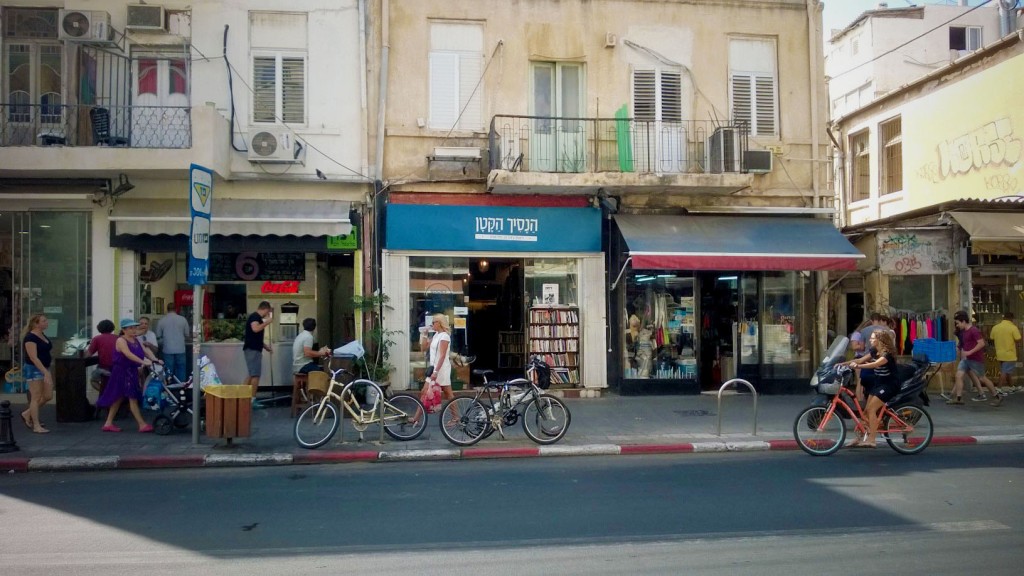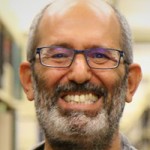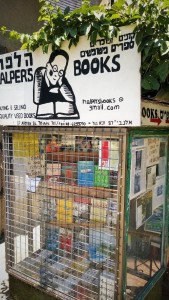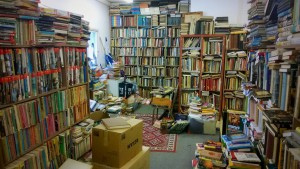

As the UT Libraries bibliographer for Hebrew, Jewish, and Israel studies, one of my favorite parts of my job is the selection and acquisition of resources for our collection. I feel lucky that I have the opportunity to shape and enhance our holdings, as other librarians did before me, so that current and future patrons would benefit from a strong and valuable collection. Whereas most of this activity is done at my office, communicating online with local and international vendors, once a year I have the opportunity to go on an acquisition trip and get my hands dirty.

Acquisition trips are important because they make possible the purchase of otherwise hard to get unique, non-mainstream items. In addition, cultivating long-term close relationships with local vendors and scholars is essential in order to build a strong collection. Knowledge of the local culture and publishing trends, coupled with personal relationships and ongoing collection work, allow me to better serve faculty and student research needs and requests.
During my last trip to Israel in May 2015, I managed to put my hands on some unique Israeli cinema resources. Some of these titles are unique holdings among academic libraries around the world, i.e. they are held either only by the UT Libraries or by fewer than 3 institutions. For example, the rare journal Omanut ha-kolnoa (“The art of cinema”), which I accidently have found in a dusty second hand book store in Tel Aviv, is held only by the Libraries and the National Library of Israel. Sefer ha-tasrit ha-katsar (“The short screenplay book”), published by the Tel Aviv University Film Department, is held only by the Libraries. Other unique resources in this subject area include Israeli film festival catalogs and short films on DVDs produced by Tel Aviv University students and never published or distributed commercially. These and other resources of Israeli cinema that we hold make our collection in this subject area a unique and distinctive collection among academic institutions in the United States and around the world.

Getting hold of those unique items would sometimes require an extensive leg work, pun intended. While visiting Israel, I spent a significant amount of time canvassing the streets, visiting second hand book stores, looking for those items. Many stores are not necessarily in the big cities — Tel Aviv, Jerusalem, or Haifa — but in the periphery, usually in Kibbutzim (collective communities). Some of these visits were pre-arranged before my trip, and some were done on-the-fly, especially those to stores in remote areas. Some of these second hand stores would have a searchable online inventory, but the advantage of visiting in person is the personal relationship with the owner. By now I am in contact with many of these vendors, who set aside the good stuff for me before adding it to their inventory.
Cultivating personal rapport has a big impact when it comes to acquiring unique or rare materials. One example of this strategy is my encounter with Ms. Leah Bernshtain Gilboa, who wrote a book about her husband’s combat unit during the 1973 Arab-Israeli war. This unique personal narrative was researched, produced, and self-published by the author, printed in only 300 copies, and distributed among former comrades, friends, and relatives. The author’s son was a presenter at a conference I attended in Montreal, just before I left for Israel. When I was chatting with him, he told me about the book and urged me to contact his mother while in Israel, so I did, and we have met one evening in Tel Aviv. The book is now part of the Libraries’ collections, a unique holding among academic libraries around the world! This is a perfect example of a relatively new book (published in 2014) which did not make it to the mainstream market, and which I was able to acquire due to a personal encounter.

There are a great many world class libraries among us. Let us not be persuaded by interest groups.